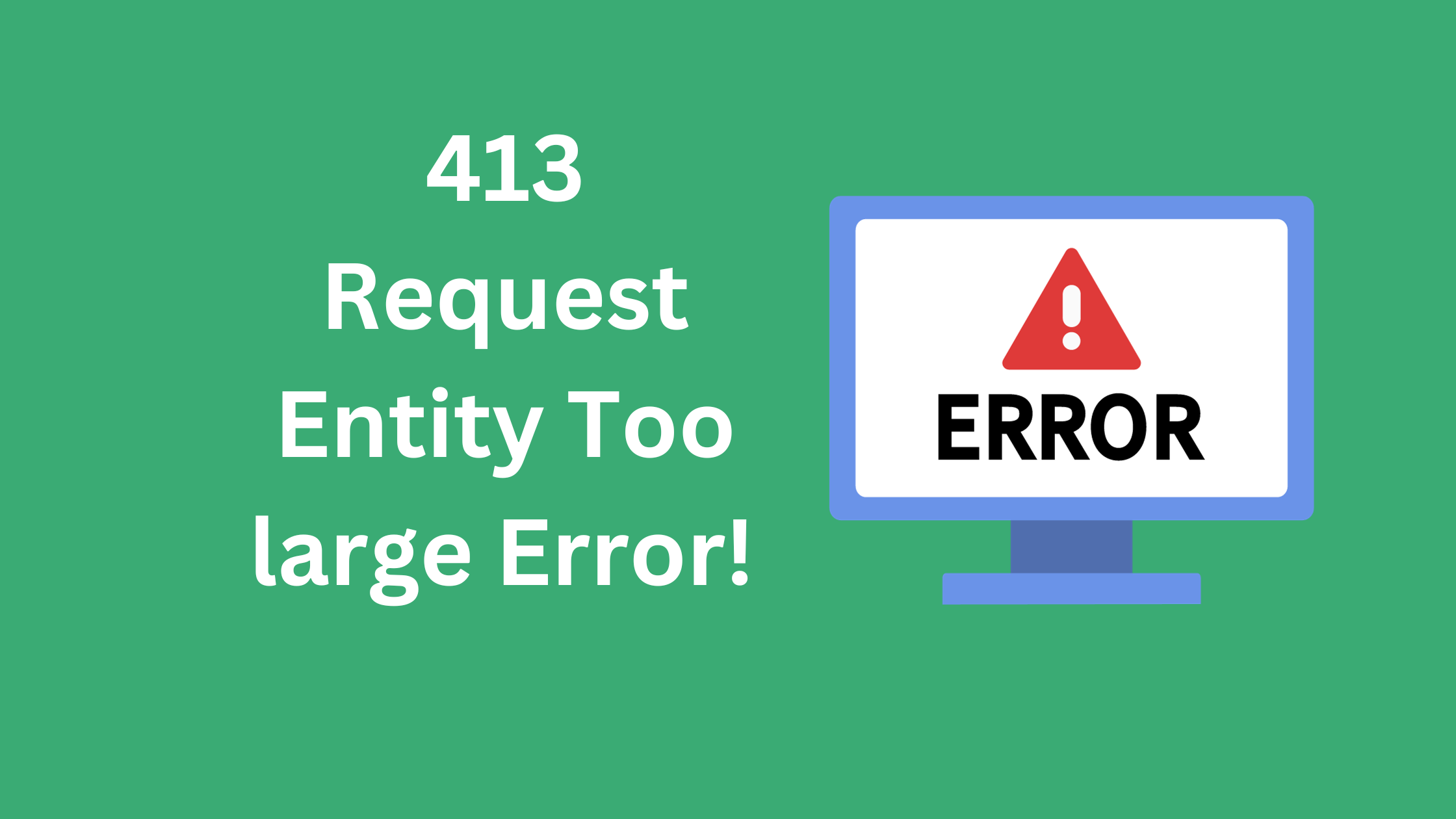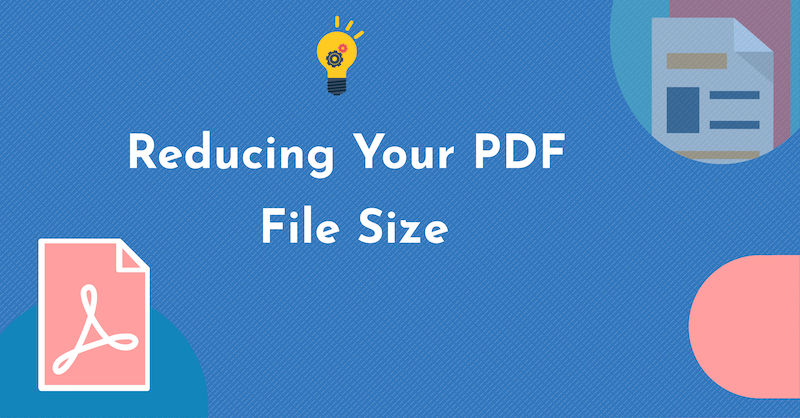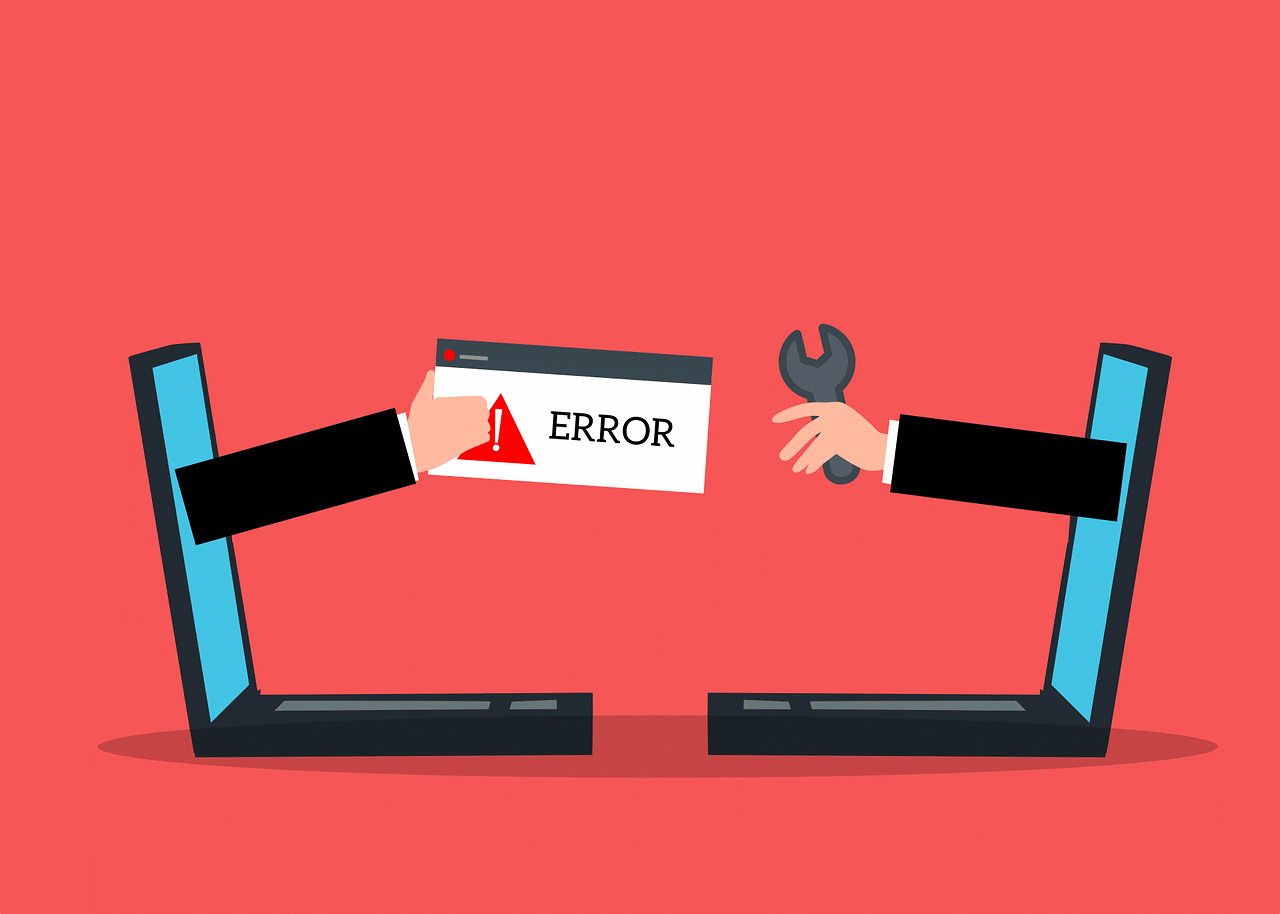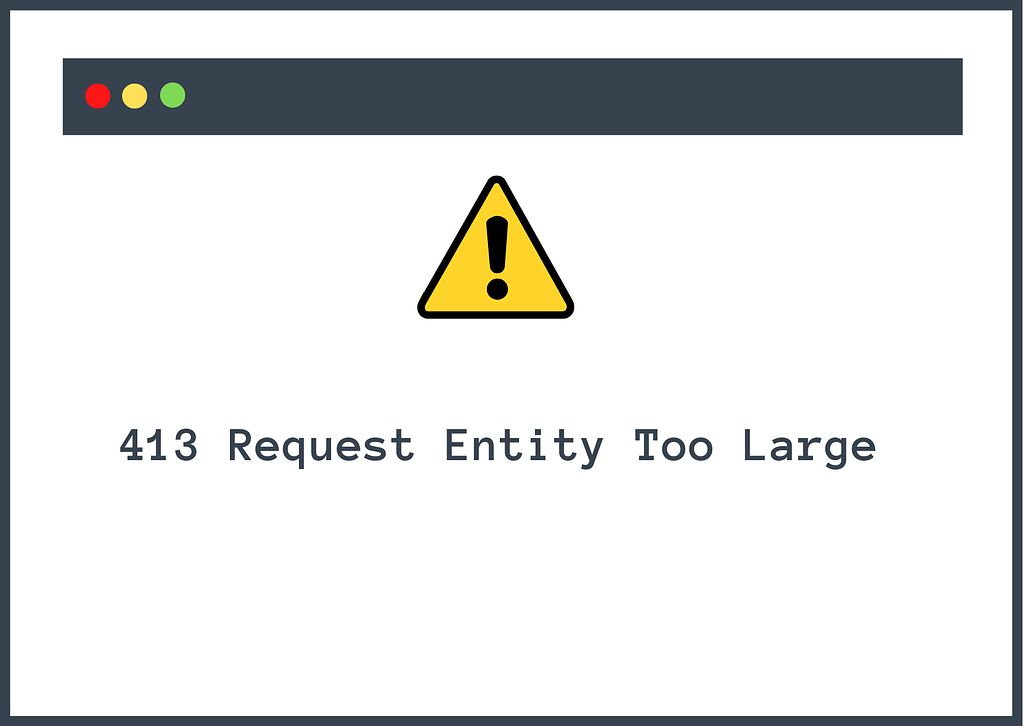413 Error: Is Your Website Uploading Secretly? (Here’s How to Fix It!)
Have you ever encountered a confusing “413 Request Entity Too Large” error message on your website? This seemingly obscure error code can leave you frustrated, especially if you’re unsure what caused it or how to fix it. But fear not! This guide will shed light on the 413 error, explaining its meaning, potential causes, and most importantly, how to effectively troubleshoot and resolve it.
Understanding the 413 Request Entity Too Large Error
The 413 error, also known as “Request Entity Too Large,” indicates a communication hiccup between your website and its web server. It signifies that the server has rejected a file upload request because the uploaded file surpasses the server’s maximum allowed size limit.
In simpler terms, your website attempted to upload a file that’s bigger than what the server is equipped to handle. Imagine it like trying to stuff a king-sized mattress into a standard suitcase – it simply won’t fit!
What Might Cause a 413 Error on Your Website?
There are two main culprits behind the 413 error on your website, both related to file size and how your website interacts with the server:
1. Exceeding Server Upload Limits:
This is the most common cause. Every web server has a pre-defined maximum upload size limit. This limit restricts the size of individual files that can be uploaded to the server through your website. If you try to upload a file that exceeds this limit, the server will reject the upload and trigger the 413 error.
Here are some examples of files that might cause this error:
– Large Images: High-resolution photos taken with professional cameras can be quite large. Uploading them directly to your website without resizing might exceed the limit.
– Uncompressed Videos: Unedited video files can be massive in size. Uploading them without compression can easily surpass the server’s limit.
– Large Data Backups: In rare cases, a malfunctioning script or plugin might attempt to upload a large backup file to the server, triggering the error.
2. Accidental Uploads by Scripts or Plugins:
Less frequent, but still a possibility, is a situation where a script or plugin on your website malfunctions. These scripts or plugins might be programmed to upload certain data to the server for functionality purposes. If there’s a bug in the script or plugin, it could attempt to upload an unexpectedly large amount of data, exceeding the server’s limit and causing the 413 error.
Here are some scenarios where this might happen:
– Corrupted Plugin: A plugin that manages image galleries on your website might have a bug that causes it to try uploading all the images again, exceeding the limit.
– Faulty Backup Script: A script responsible for backing up your website’s data might malfunction and attempt to upload a much larger file than usual, triggering the error.
In essence, the 413 error boils down to a mismatch between the file size your website is trying to upload and the maximum size allowed by the server. It can be caused by user actions (uploading large files) or by unexpected behavior from malfunctioning scripts or plugins.
How to Fix a 413 Error and Get Your Uploads Working Again
Now that you understand the cause, let’s explore solutions to tackle the 413 error:
Conquering the 413 Error: Proven Solutions to Get Uploads Working Smoothly
Encountering a 413 error message on your website can be frustrating, especially when you need to upload important files. But fear not! Here’s a breakdown of effective solutions to tackle this error and get your uploads back on track:
1. Reduce File Size:
This is often the most straightforward approach. Here are two effective strategies:
– Compression is Key: Utilize image and video compression tools before uploading. Numerous free and paid options are readily available online. Tools like TinyPNG for images and Handbrake for videos can significantly reduce file size without sacrificing significant quality.
– Resize Images Wisely: To make pictures smaller, think about changing their size. Programs like Adobe Photoshop or GIMP can help resize images. Try to find a good mix of picture quality and how much space they take up.
2. Investigate Server Upload Limits:
Sometimes, the issue lies with the server configuration. Here’s what you can do:
– Server Configuration Check: Contact your web hosting provider to inquire about the specific upload size limit set for your server. Knowing this limit will help you adjust your file sizes accordingly.
– Increasing the Limit (if possible): In some cases, your hosting provider might allow you to increase the upload limit within your hosting plan. This might be a viable option for users who frequently upload large files. However, keep in mind that increasing the limit might come with additional costs depending on your plan.
3. Identify and Fix Malfunctioning Uploads:
If you suspect a faulty script or plugin might be causing the issue, here’s how to address it:
– Scrutinize Plugins and Scripts: If you recently installed a new plugin or updated an existing one, temporarily disable them one by one to see if the error persists. This can help you identify the problematic plugin.
– Maintain Updates: Ensure all plugins and scripts on your website are updated to the latest versions. Outdated plugins might contain bugs that could contribute to the 413 error. Regularly updating your plugins helps address these issues.
4. Seek Help from Your Hosting Provider:
If none of the above solutions work, it’s time to consult the professionals:
– Technical Support: Your web hosting provider’s technical support team has the expertise to investigate further. They can analyze your server configuration and provide more specific guidance based on your unique situation.
By understanding the root causes of the 413 error and implementing these solutions, you can ensure smooth file uploads and keep your website functioning optimally. Now you have the tools and knowledge to keep those uploads flowing seamlessly!
Proactive Measures to Prevent Future 413 Errors
The 413 error can be a nuisance, but fear not! By implementing these proactive measures, you can significantly reduce the chances of encountering it again and ensure smooth file uploads on your website:
1. Awareness is Key:
– Know Your Limits: Familiarize yourself with the upload size limit set by your web hosting provider. This information is usually readily available within your hosting control panel or through their support documentation.
– Educate Your Team: If you have a team managing your website content, ensure they’re aware of the upload size limitations. This helps prevent accidental uploads of large files that could trigger the error.
2. Optimize Before You Upload:
– Embrace Compression: Make it a habit to compress large images and videos before uploading them to your website. Utilize free or paid compression tools. Popular options include TinyPNG for images and Handbrake for videos. Significant file size reduction is achievable without sacrificing significant quality.
– Resize Wisely: For images, consider resizing them to a smaller dimension while maintaining acceptable visual quality. Most image editing software, like GIMP or Adobe Photoshop, have built-in resizing features. Experiment to find the ideal balance between image size and quality for your website’s needs.
3. Maintain a Healthy Website:
– Plugin and Script Updates: Regularly update all plugins and scripts on your website. Outdated plugins can introduce bugs that might lead to unexpected file upload behavior, potentially causing the 413 error. Updating ensures you benefit from bug fixes and performance improvements.
– Monitor for Errors: Schedule regular website checks to identify any potential issues early on. Many website monitoring tools can be configured to alert you of errors, including the 413 error. Early detection allows you to address the problem before it hinders your uploads.
4. Plan for Growth:
– Consider Increased Limits (if needed): If you anticipate uploading larger files regularly, explore the possibility of increasing your upload limit with your web hosting provider. Be aware that this might come with additional costs depending on your plan.
5. Leverage Automation (Optional):
– Automated Compression: If your website involves frequent image uploads, consider implementing automated image compression tools during the upload process. This can streamline your workflow and ensure all uploaded images are optimized for size without manual intervention.
By following these proactive measures, you can significantly reduce the risk of encountering the 413 errors and ensure a smooth uploading experience on your website. Remember, a little planning and optimization go a long way in keeping your website uploads running flawlessly.
Conclusion
By understanding the 413 error and implementing the preventative measures outlined above, you can ensure a seamless file upload experience on your website. Remember, a little planning and awareness go a long way in avoiding frustration and keeping your uploads running smoothly.
While you’ve been empowered with the knowledge to tackle the 413 error yourself, OnextDigital is here to provide comprehensive website development and management solutions to elevate your website’s functionality and user experience. Here are some of our services that can specifically address website upload concerns: Web Development Service, Mobile App Development, UX/UI Design Service, White label software service, CRM & auto marketing implement service. Don’t let upload roadblocks hinder your website’s potential. Contact us today for a free consultation and let us guide you towards a website that functions flawlessly!










